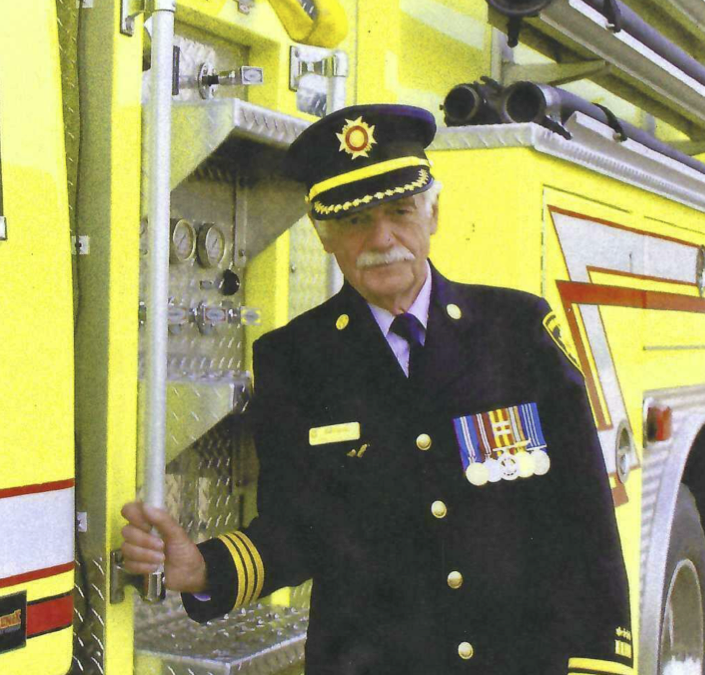
Aug 3, 2023
When facing the force of fire, firefighters have long been our communities’ front line of defence. Over the years, the fire service has undergone a remarkable transformation, adapting to changing environments, embracing technological innovations, and expanding its role beyond traditional firefighting.
To get more insight into how the fire service has changed over the years, we interviewed Chief Bill Purdy, a fire chief with an impressive 60-year career in the fire service. Chief Purdy’s wealth of experience provides valuable insight into the evolution of the fire service. Join us as we explore the significant transformations, challenges, and technological advancements that have revolutionized the fire service.
Meet Fire Chief Bill Purdy: Pioneering Fire Protection in Wabamun
Fire Chief Bill Purdy’s journey in the fire services began in 1961 when he was hired as an engineer to work at the power plant in Stony Plain, Alberta’s municipal district (M.D.). At that time, the hamlet of Wabamun had no fire protection, and with the increasing population due to the power plant’s establishment, concerns about fire safety grew. Recognizing the urgency, Chief Purdy and colleagues from Calgary Power and the local mine formed a committee to advocate for fire protection in the area.
Their dedication came to fruition when the M.D. of Stony Plain approved a plan to expand fire protection to all hamlets within its jurisdiction over the next few years. Wabamun was the first to be selected, marking the beginning of its fire service in 1964. At its inception, the department had 22 members, operating with an open boundary encompassing the entire M.D.
As the fire department grew, so did the coverage area. Fire equipment was introduced to various hamlets, and agreements were established with neighbouring towns and villages, enhancing the fire protection network. The department received its first fire truck in 1964, and rigorous training from the Fire Commissioner’s Office ensured the firefighters were well-prepared for their duties.
Chief Purdy and his team were committed to building a strong foundation for fire protection in Wabamun. A new fire hall was constructed with limited resources, costing only $6,800.
Overcoming Challenges: Equipment and Training
Throughout the history of the fire service, overcoming challenges has been a driving force in shaping modern firefighting. However, the journey toward progress wasn’t without its hurdles.
Chief Purdy shares a glimpse of the early days: “Back then, our personal protection equipment (PPE) left much to be desired. We were equipped with rubber boots, barely reaching our hips and subpar helmets. Our only form of protection from the elements was a black leather raincoat. Breathing apparatus was unheard of. We first acquired three sets of the old steel bottles, which were quite a challenge to carry around, in 1969. The oxygen in those bottles would last about 20 minutes, depending on the situation’s intensity. Over the years, the breathing apparatus has, of course, improved greatly.”
It’s incredible to think of the obstacles early firefighters faced with such limited gear. However, the department continuously sought to improve its capabilities.
Harnessing Technology for a Safer Fire Service
In the ever-changing landscape of the fire service, technology has played a pivotal role in revolutionizing the way we approach firefighting. From improved communication systems to state-of-the-art equipment, technological advancements have been a driving force in enhancing firefighter safety and effectiveness.
Chief Purdy reflects on the transformative journey: “Throughout my tenure, there have been significant technological advancements in the fire service. Being closely affiliated with the Alberta Fire Chiefs Association and the National Fire Protection Association allowed me to be part of the operation, gaining more knowledge about the latest standards and practices.”
One of the most notable changes has been in communication systems. Gone are the days of siren-based alerts. Instead, this was moved to a pager system for more efficient and precise dispatches. More recently, the introduction of mobile apps has further streamlined communication, providing firefighters with real-time information at their fingertips. With these advancements, response times have improved, enabling firefighters to reach the scene swiftly and effectively.
Chief Purdy makes a note of his experience in how communication systems have changed by noting: “In 1975, the department received our first pager for response, and full-time dispatch occurred in 1989 when Parkland County officially opened the 911 call center in Stony Plain, dispatching for several fire department and municipalities in Alberta. The center recently moved to the new fire hall in Wabamun’.”
Moreover, innovative PPE has become a mainstay in modern firefighting. Flame-resistant gear and thermal imaging cameras provide added protection and situational awareness, enabling firefighters to navigate hazardous environments more safely and efficiently.
Chief Purdy emphasizes the positive impact of these technological advancements: “The fire service has come a long way, both in terms of technological advancements and strategic planning. The commitment to embracing change and investing in the latest technologies has enhanced our efficiency and improved the safety of our firefighters and the communities we serve.”
Building the Future: Training and Recruitment in the Fire Service
Chief Purdy next reflected on the evolution of recruitment and training practices over the years. The fire service has transitioned from an ad-hoc approach to a more structured and standardized system. The Alberta Fire Chiefs Association’s proactive efforts in developing recruitment and retention strategies have proven instrumental in attracting and retaining passionate firefighters.
During my tenure as the executive director, we recognized the need for strategic improvements. Thus, in 2011, we successfully obtained a grant to conduct a thorough study on recruitment and retention. Through collaboration with a consultant, we identified essential factors that have since shaped our training initiatives. This program was piloted in several Alberta municipalities, including ours, and its success gained momentum. Thanks to our friend Peter Krich, the chief at Camrose, the program garnered interest from the Canadian Fire Chiefs Association and even expanded into the United States. Today, the program continues to thrive, empowering municipalities and fire departments with a deeper understanding of their needs.
Our study revealed a crucial insight: Firefighter retention increases significantly if individuals remain with the department for at least five years. However, in some small Alberta towns, young recruits eager to serve face challenges finding work within the community. As they seek employment elsewhere, they reluctantly leave the department.”
Looking to the Future
As we look to the future of the fire service, we recognize that new challenges will arise. Climate change, urbanization, and technological advancements will demand a flexible approach from our industry.
With extensive experience in the fire service and his involvement with the Alberta Fire Chiefs Association, Chief Purdy emphasizes the ongoing changes and advancements the fire service will face. He highlights the importance of continual adaptation to new technologies, enhancing training programs, and the increasing need for collaboration and coordination in emergency response, particularly in the face of wildfire incidents.
Chief Purdy’s passion for the fire service extends beyond his active years, as he undertakes documenting the history of the fire services in Parkland County. Recognizing the value of capturing historical information, Chief Purdy aims to expand this initiative to preserve the province-wide history of the fire service for future generations.
Summary
The fire service’s journey of transformation and adaptation has been shaped by the dedication and resilience of individuals like Chief Bill Purdy, whose remarkable 60-year career reflects the fire service’s evolution.
The fire service’s progression from rudimentary equipment to cutting-edge technology showcases its commitment to firefighter safety and efficiency. Advancements in communication systems, innovative personal protective gear, and the integration of mobile apps have revolutionized firefighting practices, allowing firefighters to respond to emergencies swiftly and effectively.
The strategic evolution of recruitment and training practices has further bolstered the fire service’s capabilities. Standardized training programs and thoughtful recruitment initiatives have proven essential in attracting dedicated firefighters and ensuring their retention within the department.
As we look to the future, the fire service must remain adaptable to meet new challenges head-on. Climate change and technological advancements will demand ongoing innovation and collaboration from our industry.
Looking for more? Sign up for your free copy of FireWatch. A monthly digital newsletter where we bring the latest industry news to your fingertips. The articles we share have caught our attention, and we will keep you in the “know”!
Sign Up Now
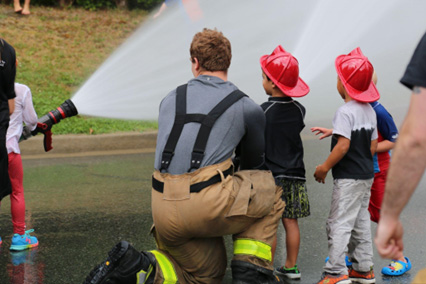
Jun 8, 2023
Hot Summer Nights: Bringing Fire Departments Closer to the Community
Engaging with the community is an important aspect of a fire department’s work, and one initiative that has proven to be successful in building these connections is the Hot Summer Nights program. This program, led by Fire Chief Michael Van Dop and the Maple Ridge Fire Department, has been running for over 25 years and has become a highly anticipated event in the community. In this article, we will explore the origins of Hot Summer Nights, its growth over the years, and its impact on both the community and the firefighters involved.
Maple Ridge Fire Department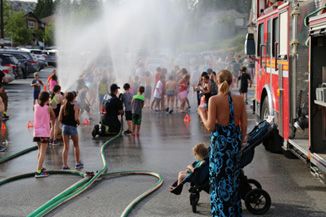
We had the privilege of sitting down with Chief Van Dop to discuss the importance of this initiative and its many benefits for the fire department and the communities they serve. As part of our commitment to assisting communities, FireWise is actively engaged in completing a Fire Department Master Plan in collaboration with the Maple Ridge Fire Department. Chief Van Dop emphasized the importance of strategic planning in this endeavour, stating, “We must get this right to ensure the fire department’s ability to meet current community needs while anticipating future growth.”
Maple Ridge, a thriving community, is projected to welcome over 40,000 new residents in the next decade and beyond. Recognizing this impending growth, Chief Van Dop stressed the importance for the fire department to act purposefully and to fulfil the city’s expectations now and in the future. He emphasized the need to proactively consider the potential impact of this growth and position the fire department for success.
Chief Van Dop’s vision for the Fire Department has various aspects, as he expressed, “We need to be intentional about our actions as a fire department and as part of the entire corporation. By doing so, we not only meet the city’s present needs but also lay a solid foundation to accommodate future demands.”
How Hot Summer Nights Connects the Community
What originally started to engage the community and to ensure rapid response times by having the volunteer firefighters on duty during the event, the initiative quickly gained traction. It started with a single fire truck visiting neighbourhoods, spraying water, and generating excitement among children. However, over time, it has evolved into a much greater community event that the entire city looks forward to.
Expansion and Collaboration
Today, the Hot Summer Nights program spans four to five weeks during the hottest period of the summer, typically from mid-July to mid-August. With the growth of the Maple Ridge Fire Department, the initiative has expanded to take place in multiple neighbourhoods at one time. The event has also seen collaboration with other city departments, such as Parks, Recreation, and the Royal Canadian Mounted Police (RCMP).
Engaging Activities
Hot Summer Nights is not just about spraying water and having fun; it offers an opportunity for different departments to engage with the community and provide valuable information. During the events, families can enjoy activities such as touring RCMP cruisers and excavators from Public Works and enjoying treats from food trucks. Fire Chief Van Dop emphasizes that these activities can also serve as natural conversation starters, allowing firefighters to discuss recruitment efforts and other community initiatives. It’s a chance to break down barriers and create a more human connection with residents.
Fire Chief Van Dop expresses, “At the end of it, you’ll see kids shivering, not wanting to go and not wanting to stop.” He also emphasizes that firefighters wholeheartedly participate as well by saying, “Let’s just say the firefighters aren’t shy about getting wet themselves. We always make a point of making sure that the firefighters are equally enjoying themselves.”
Building Relationships
The impact of the Hot Summer Nights program goes beyond a single event. It builds a sense of community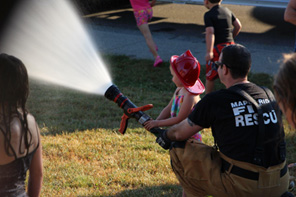 and brings neighbours closer to one another. Families plan their Wednesday nights around the event, hosting pizza dinners for the neighbourhood before the fire trucks arrive. As a result, those who may have been strangers become familiar faces, creating lasting relationships within the community. Firefighters also have the opportunity to involve their own families. Chief Van Dop describes this by stating, “It’s heart-warming. The feeling that you have when you attend one of these is great. The kids and families are all having a blast.”
and brings neighbours closer to one another. Families plan their Wednesday nights around the event, hosting pizza dinners for the neighbourhood before the fire trucks arrive. As a result, those who may have been strangers become familiar faces, creating lasting relationships within the community. Firefighters also have the opportunity to involve their own families. Chief Van Dop describes this by stating, “It’s heart-warming. The feeling that you have when you attend one of these is great. The kids and families are all having a blast.”
Inspiring Other Fire Departments
The success of the Hot Summer Nights initiative has not gone unnoticed. Chief Van Dop mentions that they have shared the program with other fire departments, and some have adopted similar initiatives. The key to success lies in adapting the program to the specific needs and resources of each community. While the scale may vary, the spirit of bringing firefighters closer to the community remains the driving force behind these programs.
Conclusion
The Hot Summer Nights initiative led by Fire Chief Van Dop and the Maple Ridge Fire Department exemplifies the importance of community engagement for fire departments. Through a simple idea that began over 25 years ago, the program has evolved into a community event that people look forward to year-round. It not only provides a platform for fun and excitement for children but also serves as an opportunity to build connections between firefighters and residents.
By expanding the initiative and collaborating with other city departments, Hot Summer Nights has become a heart-warming experience that strengthens the Maple Ridge community. As additional fire departments adopt similar programs, the Hot Summer Nights initiative continues demonstrating the impact of connecting with the community.
If your department wants to share information about fire prevention programs that have been successful in your community, don’t hesitate to get in touch with Vraya Forrest at vraya@firewiseconsulting.com to arrange an interview.
Looking for more? Sign up for your free copy of FireWatch. A monthly digital newsletter where we bring the latest industry news to your fingertips. The articles we share have caught our attention, and we will keep you in the “know”!
SIGN UP NOW

Mar 1, 2023
Smoke alarms are a crucial piece of fire safety equipment, but they only work if they are maintained.
A working smoke alarm can save lives by alerting people to fires as early as possible. However, not all homes have working smoke alarms. In fact, the National Fire Protection Association (NFPA) reports that from 2014-2018 almost three out of five fire deaths in US homes were caused by fires in properties with no smoke alarms or smoke alarms that failed to operate.
The number of fire-related deaths is rising
The Ontario fire marshal has recently reported on the number of fire-related deaths in Ontario over the past year. According to the data, there were a total of 133 deaths related to fires in 2022, which is the highest number recorded in more than 20 years.
“A very high percentage of fatalities happen in homes without working smoke alarms,” said fire marshal Jon Pegg when asked about the findings. “We don’t need to be losing families. We certainly don’t need to lose able-bodied children who just made it through Christmas, looking forward to New Year’s. It breaks my heart, ”
“I’m standing here as the fire marshal of Ontario, as a father, and as someone who’s been on the scene of fatal fires far too many times, and I’m pleading with each and every one of you,” he said. “Please take the fundamental steps and prevent a fire death. Check your smoke alarms now. It only takes seconds.”
The report also found that most of these deaths occurred during the winter months of November, December, and January. According to the Red Cross, in these colder months, heating equipment like portable space heaters are the leading cause of home fires.
Fire alarm systems in multi-unit buildings
While smaller homes often use smoke alarms, multi-unit housing like apartments often have fire alarm systems. The failure of these systems to alert tenants of danger can also cause death, often in much larger numbers. Keeping in mind the distinction between fire alarms and smoke alarms, where a smoke alarm is capable of sensing smoke and sounding an alarm within a specific area containing fumes, fire alarms are activated by smoke detectors. They sound a widespread alarm that will be heard across the entirety of a building or site.
Many large-scale fires have also been attributed to failing fire alarm systems:
- 2011 Winnipeg Airport Fire in Manitoba
- 2010 University of Toronto Fire in Toronto, Ontario
- 2009 Royal Ottawa Hospital Fire in Ottawa, Ontario
- 2008 Power Plant Fire in Montreal, Quebec.
Shawn Mahoney from the NFPA provides a detailed illustrated guide to fire alarms in a recent article entitled A Guide to Fire Alarm Basics. Its comprehensive illustrations demonstrate how a fire alarm system works and where it can fail. The article shares a visual guide and discusses some of the major components and functions of a fire alarm system.
Educating your community
Education is critical to smoke alarms and fire alarm maintenance and placement. Sharing this knowledge is an excellent way for the fire service to engage with the local community. Managing smoke alarms and fire alarms in buildings involves common sense, yet many times things are overlooked. By creating a checklist, the smallest of details can be tracked:
- Fire alarm systems have daily, weekly, monthly, and annual inspection, testing and maintenance requirements to ensure they work correctly.
- If possible, a fire alarm system should be connected to the local fire department or to a monitoring service which provides 24-hour coverage.
- Fire alarm systems should be integrated with other building systems, such as sprinkler and HVAC systems, to provide comprehensive fire protection.
- Smoke alarms are self-contained units that should be tested monthly.
- Install smoke alarms in each bedroom, outside each sleeping area and on every level of the home.
- Smoke alarms should be equipped with backup batteries in case of power failure.
- Routine fire prevention assessments are an inexpensive form of preventive maintenance
Summary
In the event of a fire, firefighters are trained to respond quickly and safely. But it is also up to citizens to protect themselves, their families, and their tenants by installing and properly maintaining smoke alarms and fire alarm systems when required in their buildings.
Reducing the number of fire-related deaths should be a top priority. By keeping fire safety education at the forefront of everyone’s minds, we can work towards reducing the number of fire-related deaths every year.
If you haven’t done so already, sign up for your free copy of FireWatch. A monthly digital newsletter where we bring the latest industry news to your fingertips. The articles we share have caught our attention, and will keep you in the “know”!
Sign Up Now
Additional information sources:
NFPA Top Fire Causes and Risks
Electrical Fire Safety Outreach Materials
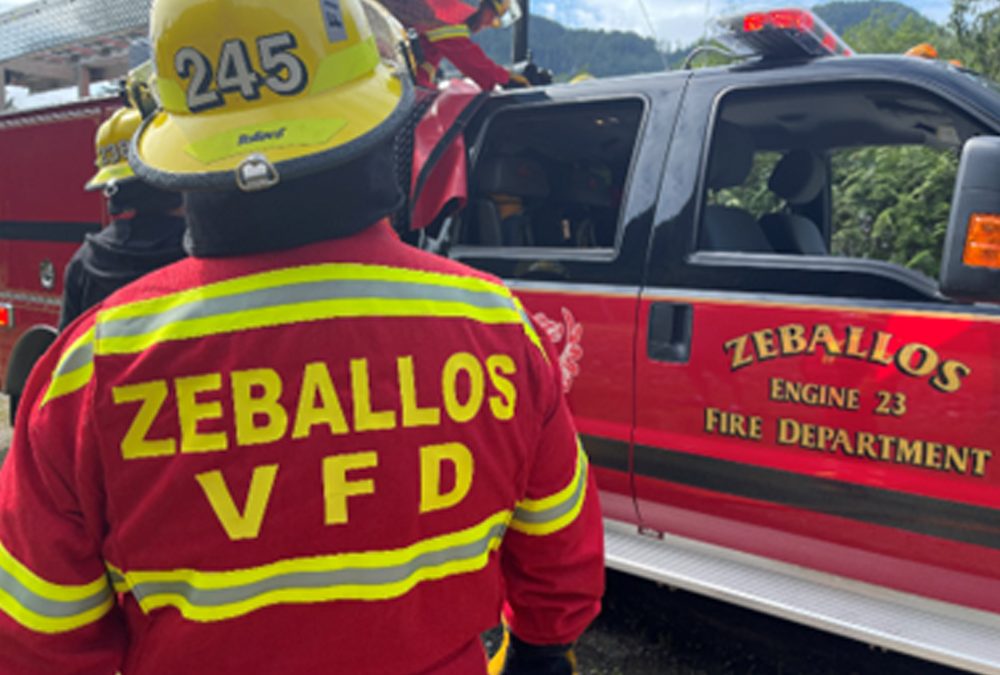
Nov 1, 2022
Lieutenant Seann Wells recently returned from a two-day boot camp hosted by FireWise Consulting in the Village of Zeballos. A town where the Fire Department had temporarily closed its doors due to unsafely low member numbers.
We sat down to discuss why this may have happened, what changes we are seeing in the volunteer fire service industry to cause numbers to continue to fall to new lows, and what things can be done to mitigate some of the losses fire departments are dealing with.
Seann Wells has been a part of the fire service for the past 20 years, starting as a volunteer in 2002 and going career in 2011. In 2019, Seann Wells joined the FireWise team as an associate, assisting with training and fire investigations in municipalities across British Columbia.
Can we solve, or slow, the declining numbers in the volunteer fire service?
“Sometimes we get stuck in the mindset of looking for what we think is a firefighter. But a wide range of skills is needed in a fire department.”
Seann talks about the different realities that communities face in recruitment for both volunteer and career firefighters. We asked him what he saw as the reason for the rapid decline in volunteer firefighters. “I would be a millionaire if I knew that answer,” he replied.
According to an article written in Firefighting in Canada, we have lost one-fifth of the volunteer base in the last five years. Not only that, but the total number of volunteer fire departments has dropped from 3,500 in 2016 to just 3,200 in early 2021.
In a study written in Firefighter Nation in 2016, the numbers of volunteer firefighters recorded were at the lowest levels since the National Fire Protection Association (NFPA) began the survey in 1983. Unfortunately, those numbers have continued to decline.
In speaking with Seann, he stressed the importance of community-specific recruitment efforts. “I think fire departments need to be very practical in their recruitment. Everyone has in their mind what a firefighter should be. They understand the commitment to the training. But do fire departments need to attract just firefighters?” he said.
“It’s not just people that can do rescues, fire suppressions, and medical. They need help with administration, which is often why people burn out. Are there people with those skill sets that can help in those areas? Are there people who can do traffic control or medical but don’t want to do fire suppression and crawl on the ground and lift ladders? You must be open-minded when recruiting people and be broader with the people you attract.”
Take a step back, and look at the bigger picture.
Consider looking at the broader picture. A wide range of skills is needed to run a fire department effectively, and hiring the right people for those jobs is essential.
“It’s like a business, just like anything else. You need to hire the correct people for the job, and there are a lot of jobs in the fire service. So, bring people on board and don’t necessarily have them as a firefighter but still have them contribute to the fire department.” Seann says.
While the number of calls continues to rise, the number of firefighters available is dropping.
Unfortunately, the declining number of volunteer firefighters does not reflect the increased need for the fire service. “The fire department is that business where you call 911, and you expect them to do anything,” Seann noted.
According to the NFPA, in 2021 alone, there were approximately 36,624,000 fire department calls, which is almost four times what it was 40 years ago. However, the number of volunteer firefighters is dwindling at a much faster rate, which can put significant amounts of stress on these departments that are already close to their limits.
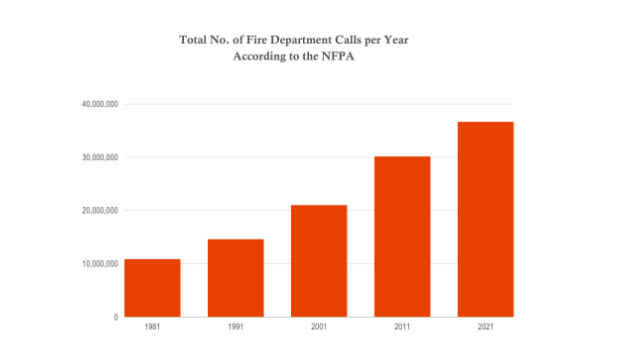
Data source: The National Fire Prevention Association (NFPA)
“It doesn’t matter if you’re in a town of 100 or 100,000; if someone calls 911 and expects the fire department, they want to see what they see on TV. Sometimes it’s a bit of a reality check.”
What happens if there aren’t enough people to safely run a department?
While uncommon, fire departments even closing their doors can happen in smaller communities that don’t have the hands to effectively keep up with demand. With the number of volunteers hitting an all-time low, the Village of Zeballos saw first-hand what this meant.
“In this case, [in Zeballos] the numbers dwindled so low that it wasn’t safe to have just one or two people tend a fire. Someone’s going to get hurt. And it becomes a liability for the community.” Seann said.
After the mayor announced the temporary suspension of the fire department, FireWise organized and conducted a two-day boot camp in Zeballos, which 14 members of the community attended to prepare to be a part of the department. Some had previous experience, but most had none whatsoever.
“What it was this quick introduction to the fire service. So, we did hose handling, hose streams, spraying water, how to move a hose that’s charged under pressure, and a few truck operations with them. Ladders, rescue equipment, communications, and a little bit about interface fires. It was a snapshot. It wasn’t to give anyone certificates or certification, it was – hey, if you want to join the fire service, this is what you need to expect.” Seann said in describing the boot camp.
“We saw a lot of smiles. A lot of people got sweaty, and that’s what we want. It means everyone participated. And we finished with a couple of scenarios, we did a couple of mock fires, and they had to respond to them and do their jobs. And they all performed well.”
With the boot camp complete and the numbers back up, Zeballos was recently given the green light to open their fire hall again.
“It was a great turnout. They need to harness the momentum now. That’s the trick. You have got to keep people engaged week after week, then you retain them. Because they are excited to come.” Said Seann.
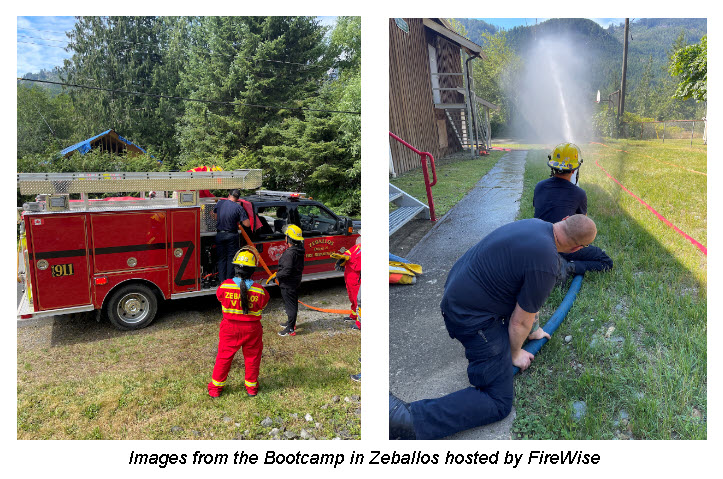
Keeping your community and your people engaged.
Keeping your departments engaged and the community involved is just one part of maintaining a sense of belonging in a fire department.
“To understand recruitment and retention, the fire department must understand why people are leaving. That is important.” Seann continued, “There is no one answer for any fire department. It’s community firefighting, and it’s community fire service. And each community can have some similarities, but each is also going to have a lot of differences You do need to take the time to understand what is drawing people to your fire department, why they want to be there, and why they are leaving.”
When people leave, find out why. Conduct those exit interviews. Dig deeper into why they are leaving. Ask them to get detailed. “Are there things that we could have changed? Were we able to achieve your goals? If we could not achieve your goals, why do you think we were unable to? Let us get to the root of it.” Seann noted.
The cause of the volunteer firefighter shortage we are facing is the result of many different changes in the industry and our world. The dwindling numbers can have profound impacts for communities like Zeballos that rely almost entirely on volunteer departments.
There is no ‘one-size-fits-all’ solution to the problem. Each community and department need to look at their individual needs and find new ways to reach recruits. Creating a sense of belonging, understanding your members’ needs, and understanding the needs of their families is just the starting point.
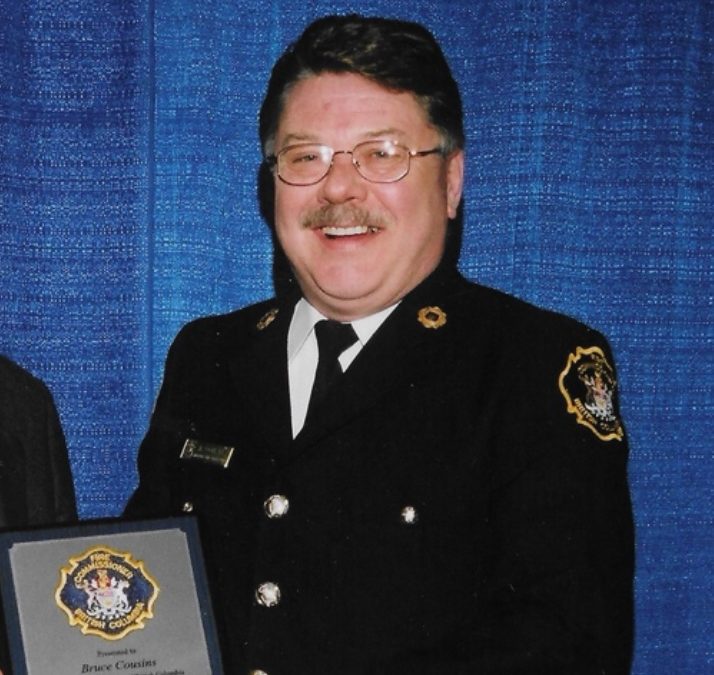
Apr 14, 2022
We regret to share the passing of Bruce Morley Cousins. Bruce was a founding partner in FireWise and spent many years as the Regional Fire Commissioner for Northern British Columbia. His commitment to the fire service, his wonderful sense of humour, and his friendship are part of his legacy. He will be greatly missed.
Bruce Morley Cousins
September 18, 1946 – March 15,2022.

Mar 23, 2022
First responders’ continuous exposure to traumatic events can lead to various occupational stress injuries. The Centre for Suicide Prevention carried out a study that concluded that “first responders experience PTSD at twice the rate of the average population.” Empathy fatigue, also known as vicarious trauma or secondary stress, can often mirror the symptoms of PTSD, making it sometimes difficult to separate the two.
Know How to Recognize the Symptoms
The daily stresses that first responders encounter when completing their work take a toll on their emotional, mental, and physical health. The unfortunate fact is many first responders go into their professions because of their caring and empathetic nature. Being susceptible to the emotional stress of those they encounter and care for is often a harmful side effect of their profession.
According to the Canadian Medical Association, some of the symptoms and side effects of emotional trauma can include:
- Feeling easily overwhelmed or hopeless,
- Finding difficulty concentrating and making decisions,
- Having trouble sleeping or experiencing frequent nightmares,
- Feeling increasingly irritable, angry, sad, or depressed,
- Losing interest in tasks that you previously enjoyed,
- Becoming isolated and withdrawn from others,
- Increasing the use of substances to self-medicate, and
- Feeling detached or emotionally numb.
Responsibilities of an Employer
Employers in the workplace have a responsibility for understanding the stresses their staff may be experiencing, recognizing the symptoms of empathy fatigue and PTSD, and offering methods of support. Organizations such as the TIC Training Center have begun to provide training and certification to individuals and organizations to become ‘trauma-informed’ to improve abilities to recognize early warning signs and ways of dealing with them effectively.
Prioritizing Your Mental Health Above all Else
The continuous exposure to suffering and loss of life that first responders experience can quickly result in empathy fatigue, later evolving into emotional trauma and PTSD. It is vital for individuals to prioritize their own mental health needs and well-being in any profession. Reaching out to friends, family, or a support group is recommended as a first step if symptoms, as mentioned above, are evident. Many resources are available for first responders with the Honour House Society, the First Responder Support Network, the Canadian Mental Health Association, and more.
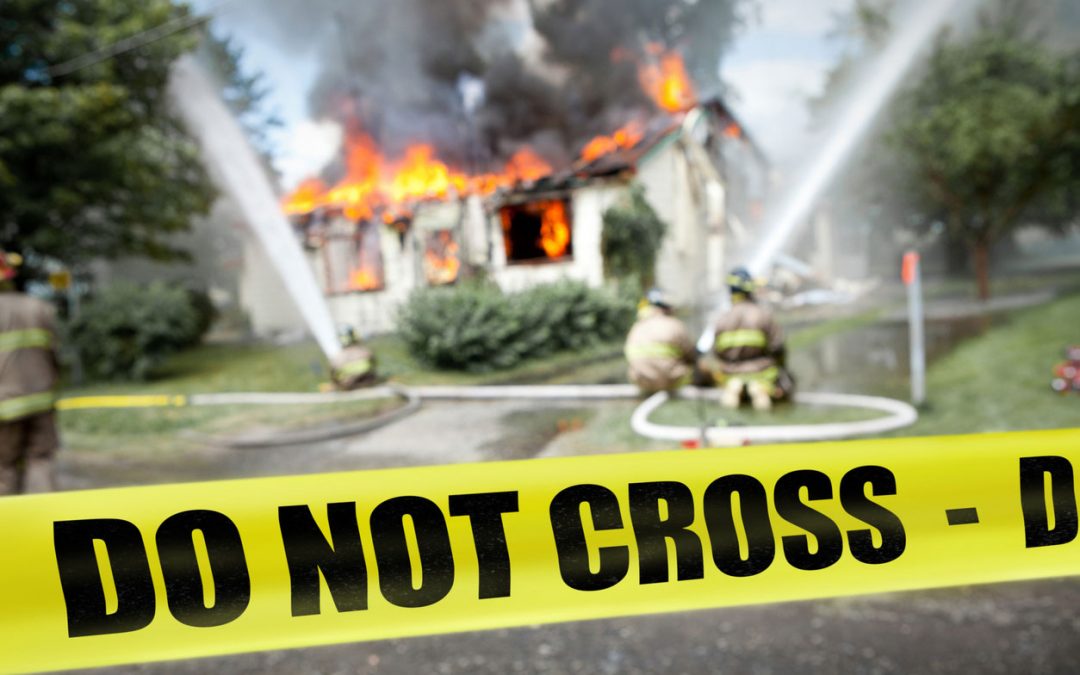
Feb 17, 2022
Material burning characteristics have changed, so it is time to change the building code.
Author: Bob Turley
Recently, three children perished in a house fire on Sandy Lake First Nation in northern Ontario. A CBC news report said the victims were aged nine, six, and four. The statement said, “firefighters, police, and community members acted quickly to try to help, but the house was already engulfed in flames.” The article says only one water truck was available to feed the fire truck, along with a lack of adequate water lines and infrastructure preventing the use of fire hydrants.
Another recent CBC headline read, “3 children found dead in Brampton, Ont., townhouse fire”. This article says, “Brampton Fire Chief Bill Boyes said firefighters encountered heavy flames and smoke when they arrived at the scene. The three children were pulled from the home and rushed to hospital, but they were later pronounced dead”.
So, what are the similarities and differences between these two incidents? Sandy Lake First Nation is a community with around 2,000 people, and Brampton has a population of about 600,000. Both communities have fire departments, with Sandy Lake protected by volunteers and Brampton protected by career staff. In Sandy Lake’s case, one news report suggests problems with fire hoses and water supply, but there were no suggestions of water supply issues in Brampton. It is reasonable to assume Sandy Lake had limited numbers of firefighters to draw from based on the single-engine response. At the same time, Brampton probably responded with 4 or 5 pieces of apparatus and 20 plus firefighters.
As far as saving lives goes, both departments had similar outcomes likely stemming from a similar cause- the time from ignition to flashover overtaking fire department response times. Flashover is the point in a fire when all combustible materials in a room are heated to their ignition point. The flashover is violent and includes exceptionally high heat energy that will even overwhelm firefighters’ protective clothing. After the flashover, all the fuel in the room is on fire, and the chance of human survival is negligible.
 The time to flashover has changed dramatically over the years with modern synthetic furnishings. Now polyurethane foam is widely used in soft furnishings such as mattresses, chairs, and sofas. As can be seen in this photo, polyurethane foam is the leading synthetic component of most modern furnishings.
The time to flashover has changed dramatically over the years with modern synthetic furnishings. Now polyurethane foam is widely used in soft furnishings such as mattresses, chairs, and sofas. As can be seen in this photo, polyurethane foam is the leading synthetic component of most modern furnishings.
When ignited, polyurethane foam produces carbon monoxide, hydrogen cyanide, and other toxic products on decomposition and combustion, which can quickly incapacitate anyone breathing the smoke and other products of combustion. The toxic products created by burning polyurethane foam are described in this article.
When burning, polyurethane also produces much more heat energy than older natural products like kapok, which was widely used as stuffing in older furnishings.
Years ago, it was common to have flashover occur after about 10 to 20 minutes from the time of ignition. New furnishing can cause flashover in less than 3 minutes, and during full-scale test fires, some rooms reached flashover in under 2 minutes.
There are no lives for the fire department to save when this happens. The people are dead before the firefighters leave the station.
How well a fire department is trained, equipped, or staffed has little to do with saving lives in the room or area of fire origin. The more critical life safety factors are early fire detection, getting the people out of the fire area quickly (adequate exiting) and containing the fire to the room of origin (fire separation). Early detection with smoke alarms and fire separations in residential occupancies are practical tools to accomplish this. Fire separations are building components, including gypsum boards and doors designed to slow the spread of fire and smoke in the building.
Another method to slow the growth and spread of fire is to sprinkler the building. Sprinklers do not replace the need for fire departments, but they can save lives and property by reacting quickly in the early stage of a fire. Sprinklers can slow or prevent the fire from growing, allowing time for the fire department to arrive and extinguish the fire.
The National Fire Protection Association (NFPA) is a global self-funded non-profit organization devoted to eliminating death, injury, property, and economic loss due to fire and other related hazards. Their research shows working residential fire sprinklers control fires 96% of the time. When sprinklers are present, people are 81% less likely to die in a home fire, and property damage is reduced by about 70%.
The cost of installing home sprinkler systems varies, but most estimates are between $1.50 to $2.00 per square foot for new house construction and between $2.00 and $7.00 per square foot for retrofitted systems. These costs represent a minor amount of money compared to the loss of lives and property these systems could save.
If we want to save lives, building and fire codes should require the installation of sprinkler systems in all residential buildings. There is a long history of opposition to residential sprinkler systems from building contractors and affordable housing advocates. Still, there are opportunities to use similar strategies as is being used to improve the energy efficiency of homes. Safer homes and the reduction of preventable deaths from a fire are things everyone should get behind.
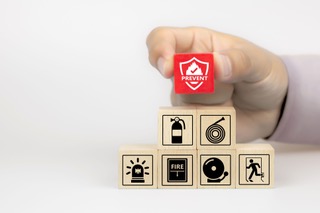
Jan 18, 2022
The Importance of Fire Prevention: Who Should be Held Responsible?
The deadliest fire in the Bronx in three decades took the lives of 17 people including 8 children in an apartment building on January 9, 2022. At FireWise, we’re asking ourselves, “Is it time to reflect on the importance of fire prevention and fire inspections? Should fire prevention and inspections be the sole responsibility of the fire department, or should the building owner share that responsibility? What can be done to prevent a tragedy like this from happening again?”
The National Building and Fire Codes of Canada, and many other jurisdictions, state that it is the building owners, or their agents, responsibility to comply with the codes.
Does that mean that every building must comply with the current code? Or should the building only be expected to conform to the code in effect at the time of construction? Although the recent Bronx fire is reported accidental in nature, being caused by a faulty electrical heater, we have often heard fire prevention professionals and building owners state that the ‘building only needs to meet the code of the day, but that is ridiculous if you think about it. When I worked for the Office of the Fire Commissioner, the office’s policy was that “Buildings need not meet the current code standard but they must provide an acceptable level of fire and life safety as determined by a competent fire official.”
Fire Safety Technologies Have Changed in the Last 80 Years
Our understanding of fires has progressed since the first National Building Code in 1941 and the first National Fire Code in 1963. Data shows that today’s fires spread faster and are more intense than those of 80 years ago. Does it make sense to expose residents to those higher risks with technologies we know are not up to the job? Of course not.
Even if the fire was accidental, was the building maintained to minimize the spread and speed of the fire? Could lives have been saved if the building had fire prevention measures in place?
One of the news articles I read about the fire said, “the door to the apartment and a door to a stairwell was left open, letting smoke quickly spread throughout the building.” The failure to close doors is a fire separation issue which, in my experience, is one of the most frequent causes of loss of life from fire. The simple installation of alarm-supervised hold-open devices on doors in public corridors and self-closing devices on apartment doors effectively manage these risks.
How do we change human behaviour? We need to look no further than the successful tobacco and seat belt programs as examples of where we have done this through education and enforcement. A combination of education programs, legal requirements, and penalties for non-compliance has reduced smoking and has seen a massive uptake in seatbelt use. Perhaps it is time to make fire safety education programs mandatory for building owners of multi-family residential and assembly buildings.
Who Should be Held Responsible?
Building owners have a responsibility to maintain an acceptable level of fire safety through the inspection, testing, and maintenance of fire safety systems. They need to understand what systems are provided in their facility and that ongoing maintenance is required. From time to time these critical systems will also require upgrading. Understanding and competence start with education.
At FireWise we believe that knowledge saves lives and to this end, have produced a course that provides building owners and their agents with the information they require to keep their facilities fire safe. The Building Safety Fire Prevention Training course is online and looks at the three most important aspects of fire safety: early detection, adequate exiting, and fire separations. The course also provides essential guidance on developing effective fire safety plans and understanding fire suppression systems.
Effective fire prevention is a team effort involving the building owner, fire department personnel, and occupants. FireWise can help you develop an innovative approach through education to improve the fire safety of the buildings in your community. For more information, contact us at info@firewiseconsulting.com.
Article links:
https://people.com/human-interest/bronx-apartment-fire-death-toll-revised-door-malfunction-investigated/
https://www.nytimes.com/2022/01/11/nyregion/bronx-fire-missing-persons.html
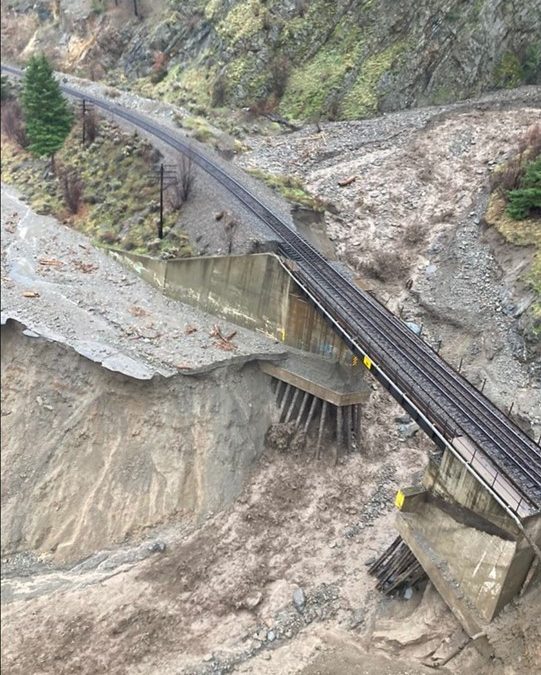
Nov 22, 2021
Recent floods in British Columbia show firefighters how they have become an all-hazardous emergency provider.
Firefighters are one of the first to be called into a crisis situation and they determine which additional services need to get involved. Simply, they take care of the immediate threat to life. Our fire service community needs support from you, from the government, and the community as these events of the past two years clearly demonstrate how they have become an all-hazardous emergency provider.
Current Flood Situation in BC
The current situation that the Province of British Columbia is facing with flooding and rockslides puts additional pressure on the fire service community in particular. If they weren’t already, they certainly are now, more than ever an all-hazard provider. Usually, as the first responder, they are required to make life-saving decisions in a timely manner and determine which additional support needs to be brought to the scene. A recent example of this is those that were called to the mudslide in Agassiz Fire Department (AFD) where individuals were trapped in their cars. These front-line workers, along with others, saved the lives and their presence alone calmed the fears of many.
The Canada Task Force 1 (CTF1) is a Canadian multi-disciplinary team that brings together firefighters, and specialists like engineers, paramedics, police, and others. Together they come in to back up local response agencies in all aspects of major emergency response. Many volunteers their time to participate in this important, national asset. This week they were deployed to Highway 7 to address several submerged objects and worked closely with AFD. The Canada Task Force 2 (CTF2), a team based in Alberta, recently assisted Whitehorse as they battled major flooding. As a result of climate change, wildfires and unusual weather events are more frequent and more severe. The risk is still out there as we see with the recent events in Abbotsford.
Photo courtesy of @DriveBC

Oct 26, 2021
Did you know that the incidents of fire are 10 times higher within Indigenous communities versus other Canadian communities?
This statistic comes from the National Indigenous Fire Safety Council Project and highlights the ongoing fire threat to Indigenous homes and families which is five times more likely to be fatal. That number increases to over 10 times for First Nations people living on reserves. The National Indigenous Fire Safety Council’s website is designed to offer support to Indigenous communities.
The reasons that fire safety is such a prevalent issue in First Nations communities vary but can be attributed in part to lack of smoke alarms, higher poverty rates and insufficient housing. The importance of adequate training being provided within every community is extremely crucial and losses on First Nation lands far surpass those on off-reserve communities.
Knowing how to prevent a fire can make the difference between lives saved or lost. Remembering how an unattended pot on a stove can readily turn into a kitchen fire, and that flammable objects near a baseboard, electric heater or a fireplace can cause pyrolysis (the decomposition of a combustible object brought on by constant or high temperatures which lower its ignition point) can make the difference between life and death.
While wildfires and other natural disasters can also put First Nations communities at risk; fires in homes are often completely preventable. It is crucial to implement fire safety protocols and attain fire safety prevention training to reduce and prevent losses.
Five Reasons to Learn About Fire Safety and Prevention
- Fire prevention is inexpensive and saves lives and property.
- Routine fire prevention assessments ensure a high level of building and occupant safety.
- Detecting and quickly extinguishing a fire by learning how fire protection systems are designed.
- Regular safety code inspections provide occupants with fire safety education, it demonstrates a commitment to safety and builds trust within the community.
- Learning how to eliminate hazards that can cause a fire to start and grow.
FireWise has developed online training courses that are easy to follow and provide the knowledge needed to save lives. To learn more please check out Building Safety and Fire Prevention training program at www.firewiseconsulting.com.




 and brings neighbours closer to one another. Families plan their Wednesday nights around the event, hosting pizza dinners for the neighbourhood before the fire trucks arrive. As a result, those who may have been strangers become familiar faces, creating lasting relationships within the community. Firefighters also have the opportunity to involve their own families. Chief Van Dop describes this by stating, “It’s heart-warming. The feeling that you have when you attend one of these is great. The kids and families are all having a blast.”
and brings neighbours closer to one another. Families plan their Wednesday nights around the event, hosting pizza dinners for the neighbourhood before the fire trucks arrive. As a result, those who may have been strangers become familiar faces, creating lasting relationships within the community. Firefighters also have the opportunity to involve their own families. Chief Van Dop describes this by stating, “It’s heart-warming. The feeling that you have when you attend one of these is great. The kids and families are all having a blast.”






 The time to flashover has changed dramatically over the years with modern synthetic furnishings. Now polyurethane foam is widely used in soft furnishings such as mattresses, chairs, and sofas. As can be seen in this photo, polyurethane foam is the leading synthetic component of most modern furnishings.
The time to flashover has changed dramatically over the years with modern synthetic furnishings. Now polyurethane foam is widely used in soft furnishings such as mattresses, chairs, and sofas. As can be seen in this photo, polyurethane foam is the leading synthetic component of most modern furnishings.

